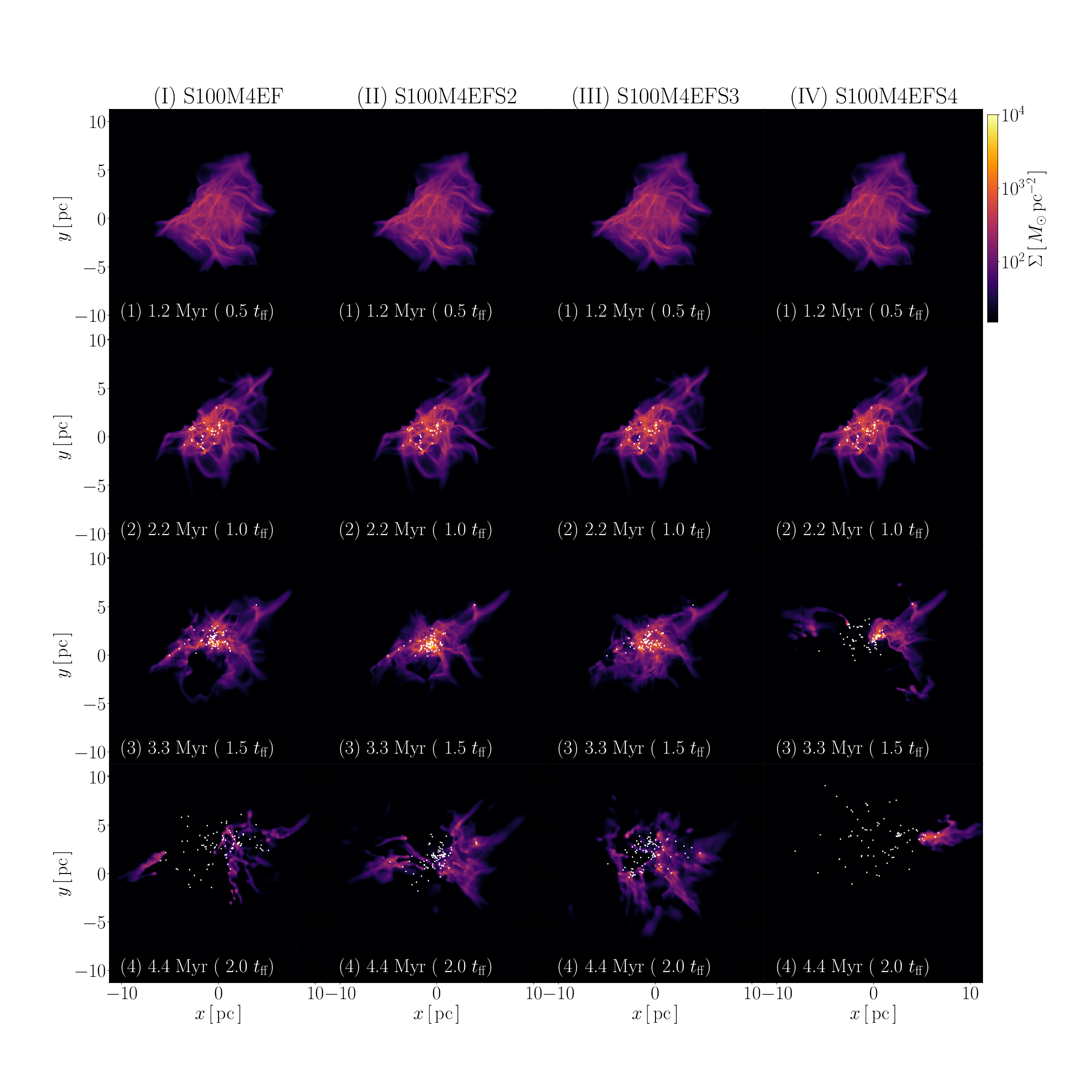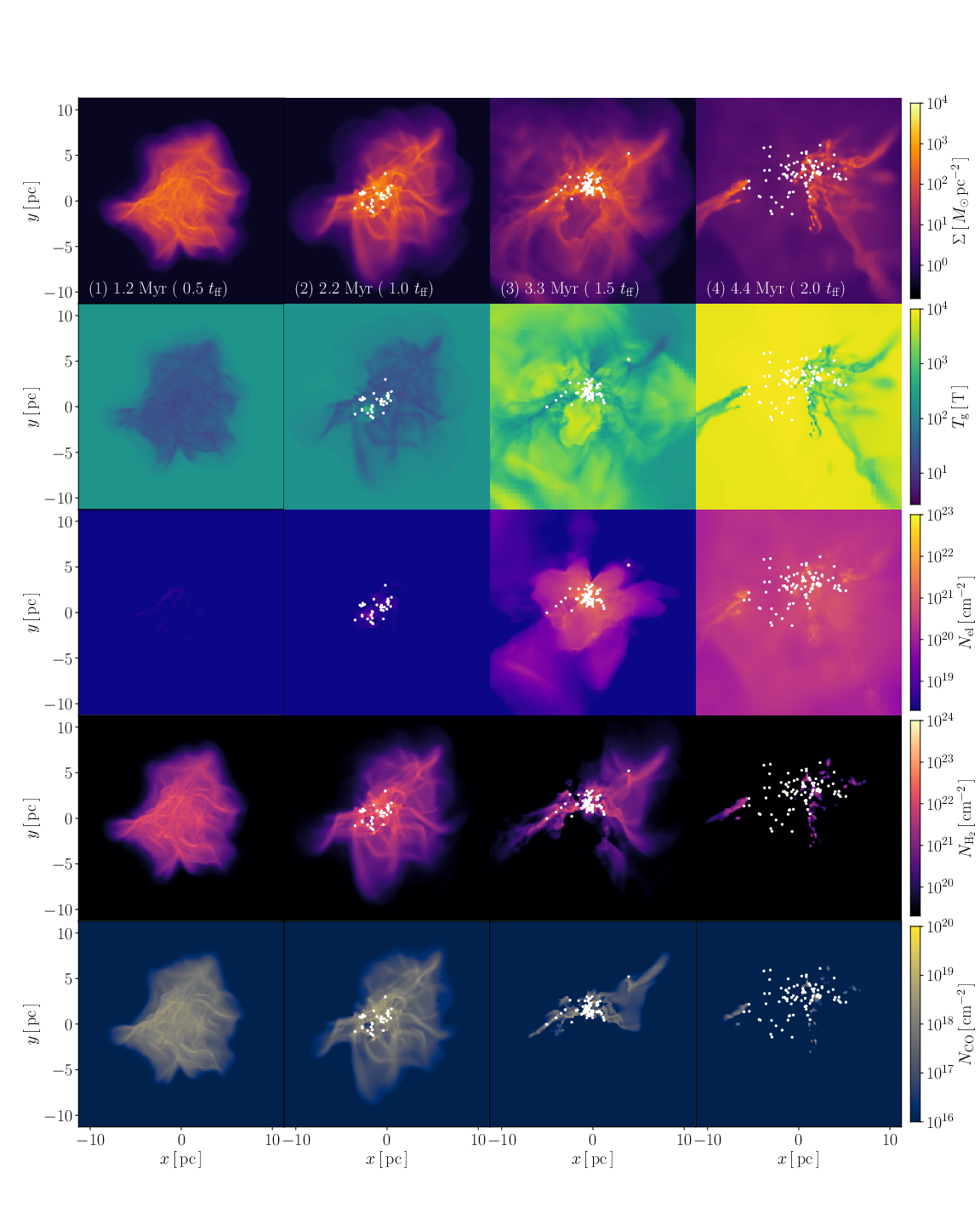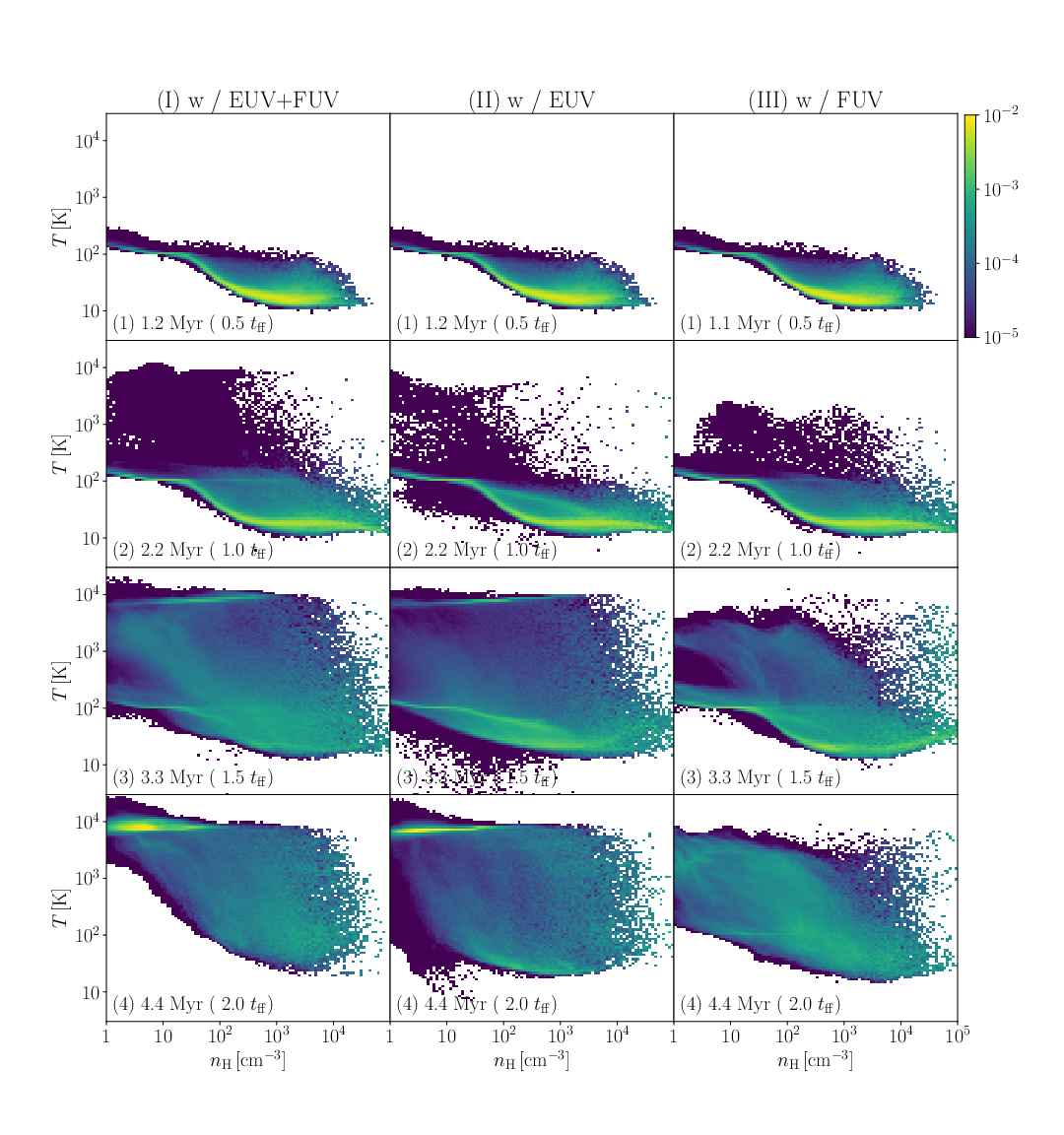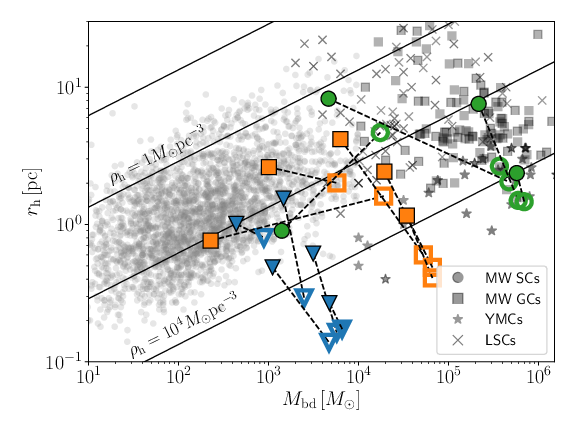研究成果・発表論文
Far and extreme UV radiation feedback in molecular clouds and its influence on the mass and size of star clusters
Fukushima, Hajime, & Yajima, Hidenobu
要旨
We study the formation of star clusters in molecular clouds by performing three-dimensional radiation hydrodynamics simulations with far ultraviolet (FUV; 6 eV≦hν≦13.6 eV) and extreme ultraviolet (EUV; hν≧13.6 eV) radiative feedback. We find that the FUV feedback significantly suppresses the star formation in diffuse clouds with the initial surface densities of Σcl ≲ 50 M⊙pc-2. In the cases of clouds with Σcl ~ 100 - 200 M⊙pc-2, the EUV feedback plays a main role and decrease the star formation efficiencies less than 0.3. We show that thermal pressure from PDRs or HII regions disrupts the clouds and makes the size of the star clusters larger. Consequently, the clouds with the mass Mcl ≲ 105 M⊙ and the surface density Σcl ≲ 200 M⊙pc-2 remain the star clusters with the stellar densities of ~ 100 M⊙pc-3 that nicely match the observed open clusters in the Milky Way. If the molecular clouds are massive (Mclrsim105 M⊙) and compact (Σrsim400 M⊙pc-2), the radiative feedback is not effective and they form massive dense cluster with the stellar densities of ~ 104 M⊙pc-3 like observed globular clusters or young massive star clusters. Thus, we suggest that the radiative feedback and the initial conditions of molecular clouds are key factors inducing the variety of the observed star clusters.








 Ja En
Ja En